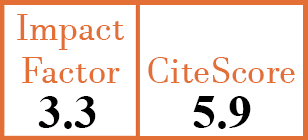Full Papers
The spectrum of early rheumatoid arthritis practice across the globe: results from a multinational cross sectional survey
E. Nikiphorou1, J. Galloway2, P. Van Riel3, Y. Yazici4, G. Haugeberg5, A. Ostor6, F. Gogus7, M. Kauppi8, T. Sokka9
- Department of Rheumatology, Whittington Hospital, London, UK; and Jyväskylä Central Hospital, Rheumatology Unit, Jyväskylä, Finland.
- King’s College London, Academic Rheumatology Department, London, UK.
- Department of Rheumatology, Bernhoven, Uden, The Netherlands.
- NYU Hospital for Joint Diseases, New York, NY, USA.
- Department of Rheumatology, Martina Hansens Hospital, Bærum, Norway.
- Department of Rheumatology, Addenbrookes Hospital, Cambridge, UK.
- Department of Physical Medicine and Rehabilitation, Division of Rheumatology, Gazi University, Faculty of Medicine, Ankara, Turkey.
- Medical School, Tampere University, Tampere, Finland.
- Jyväskylä Central Hospital, Rheumatology Unit, Jyväskylä, Finland. tuulikki.sokka-isler@ksshp.fi
on behalf of QUEST-RA
CER9985
2017 Vol.35, N°3
PI 0477, PF 0483
Full Papers
Free to view
(click on article PDF icon to read the article)
PMID: 28134086 [PubMed]
Received: 05/10/2016
Accepted : 10/11/2016
In Press: 27/01/2017
Published: 07/06/2017
Abstract
OBJECTIVES:
To explore patterns of real-world early RA (ERA) care across countries.
METHODS:
An online survey was disseminated to practising rheumatologists across Europe and the US, also made accessible on social media between April and May 2015. Survey questions (n=38) assessed the structure and setting of ERA clinics, times to diagnosis and treatment, patient monitoring, guideline use and data recording.
RESULTS:
A total of 212 rheumatologists from 39 countries (76% European) completed the survey. 62% had an ERA clinic based at a university hospital. Patient referral to rheumatology was mainly (78%) via primary care; 44% had an agreed ERA local referral pathway, 15% a national pathway. Only 16% had dedicated ERA clinics, the majority being practitioners in Northern Europe with access to a local or national referral pathway. Data for research were collected by 42%. Treatment guidelines were followed by the majority, especially rheumatologists practising in Europe. Variations existed in the use of initial DMARDs with treatment decisions reported to be influenced by international/national guidelines in 71%/61%. No significant relationship between country gross national income and the availability of ERA clinics was seen.
CONCLUSIONS:
This study provides comparative benchmark information regarding the global provision of ERA care. Substantial variations exist in referral and early assessment pathways with guidelines having a most apparent impact in Northern Europe. Provision of an ERA service does not appear to be constrained by cost, with conceptual factors, e.g. clinician engagement, perhaps playing a role. These initial insights could potentially help harmonise ERA management across countries.


